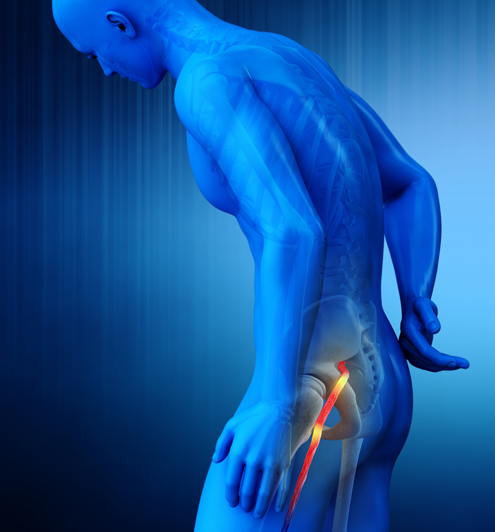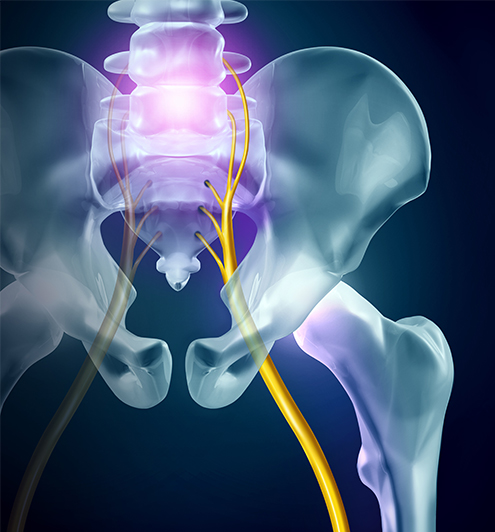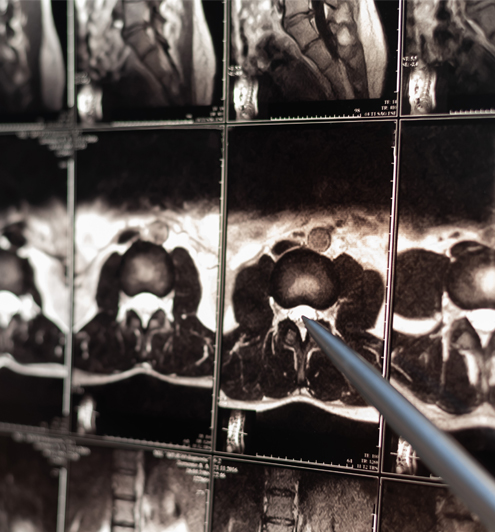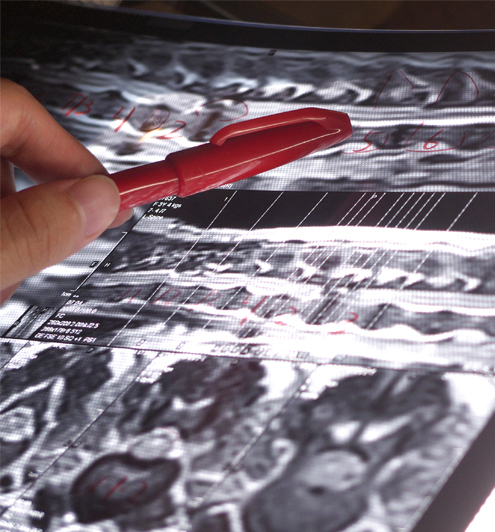SPINE SURGERY
Radiating Pain and Numbness
Sciatica
Radiculopathy
Spinal Stenosis
Tumors
Sciatica
is a medical term used to describe symptoms of shooting pain, tingling, and numbness down the leg caused by a disc herniation, lateral recess stenosis or foraminal stenosis. Sciatica is one of the more common terms used when a person is experiencing pain radiating down their leg. You may also hear sciatica called a lumbar radiculopathy. There are many potential causes for sciatica which could put pressure on the sciatic nerve or related nerve roots in your low back to cause symptoms.


Radiculopathy
refers to damage or irritation of the nerve roots that exit the spine, commonly referred to a “pinched nerve.” A nerve exits from the spine and travels in a specific path through the skin and muscles. These paths, called dermatomes, are the same for all people although there may be some slight variation.
Nerves are responsible for these three main functions: pain, sensation, and strength. When a nerve is pinched, pain is usually the first sign of irritation, then sensation changes tend to progress. Pain often is described in a variety of ways such as dully, achy, sharp, shooting. Sensation changes often initially are described as pins and needles or possibly tingling that may progress to numbness. Lastly, strength changes may also be noted. Strength changes may vary from very subtle to quite severe.
Spinal Stenosis
The spinal cord is a long tubular structure that connects the brain to the peripheral nervous system through spinal nerves, allowing us to move our body, feel our surroundings, and experience pain. The spinal column protects our spinal cord and is made up of bones, joints, discs, soft tissues, and nerves. The spinal cord is housed in the cervical and thoracic spine and normally terminates at the upper lumbar spine where the nerves then spread out and travel freely through the canal. Cervical and thoracic spinal stenosis can cause pressure on the spinal cord causing myelopathy. Lumbar spinal stenosis can cause pressure on central and exiting lumbar spine nerves causing neurogenic claudication. This can be caused by several factors. If the central spinal canal or the foramen through which the spinal nerves exit becomes narrowed this is considered spinal stenosis.


Tumors
There are rare and typically benign list of tumors within the spinal canal that can cause symptoms of pain, numbness, weakness and urinary symptoms.
